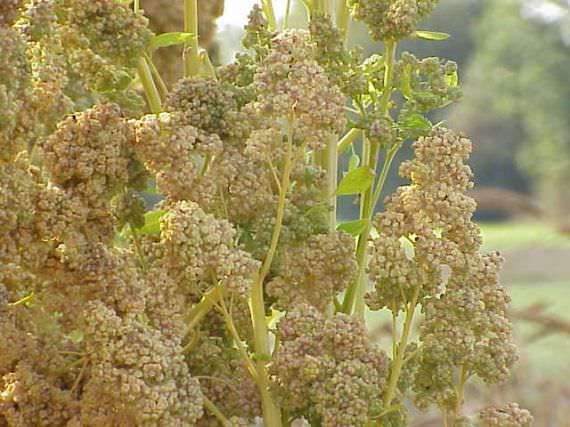|
The dailySpark reader AHHGEE recently asked about quinoa. Quinoa is turning up everywhere these days. This little grain, while still relatively unknown in North America, has been around since ancient Inca times, when warriors reportedly mixed quinoa with fat and rolled it into "war balls" that sustained them during lengthy battles. It comes from the Andean region of South America. What is it? Quinoa (pronounced keen-wah or kee-no-uh) is called the mother of all grains and for good reason. It was second in nutritional importance to the Incas; only the potato was more highly revered and respected. It's small, slightly larger than couscous, and when it's cooked it looks like a small spiral. It can range in color from cream to beige or red. Is it good for you? Quinoa is 12-18% protein, which is quite high for a grain, gluten free and easy to digest. Unlike most other grains, it contains a full, balanced set of amino acids; it's also a good source of fiber and phosphorus and is high in magnesium and iron.  How do you eat it? Quinoa can be used in place of rice, couscous or any other grain. It gets fluffy when cooked, and holds up well in "fried rice," pilafs, and other recipes. It can be eaten plain or flavored just as you would any other grain. It also makes a great breakfast cereal. Add it to oatmeal in the mornings or sweeten leftover plain quinoa with dried fruits, honey and nuts. How do I cook it? In nature, quinoa has a bitter outer coating that helps deter insects and animals from eating it; however, most quinoa has been processed to remove the coating, called saponins. Quinoa is easy and quick to cook. Use a 2:1 ratio of water to quinoa. Bring water and quinoa to a boil, reduce heat to medium-low, cover and simmer for about 15 minutes. It should have a tiny curl and have the texture of pasta when cooked. It tastes nuttier than rice or couscous, but it isn't as strong as barley or wheatberries. It should be slightly chewy when you cook it. Find more quinoa recipes here. Where do I buy it? In the health food section of your supermarket in boxes (try the red heirloom variety) or alongside other grains in the pasta aisle. You can also find it in bulk at many larger grocery stores (such as Whole Foods). Like most grains, it is fairly inexpensive, though prices vary. Nutrition info for 1/2 cup, cooked (Note: Quinoa is higher in calories and fat than other grains, but it also has more nutrition.) 292 calories 4.8 g fat 52.7 g carbs 5.1 g fiber 10.2 g protein 20% RDA iron 39% RDA phosphorus 85% RDA riboflavin Have you tried quinoa? Will you? How do you cook it? |
Popular Entries
More From SparkPeople
|

.png)













.jpg)